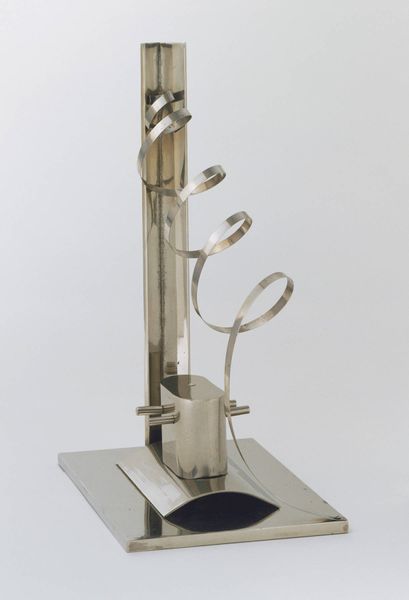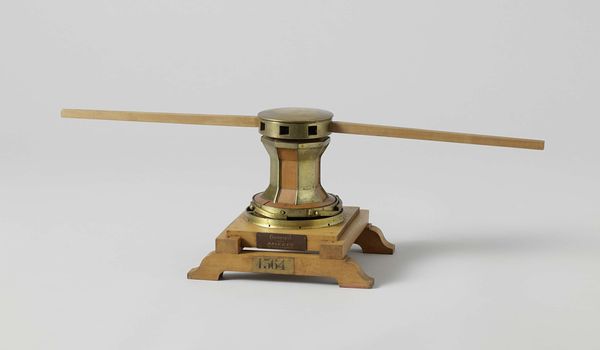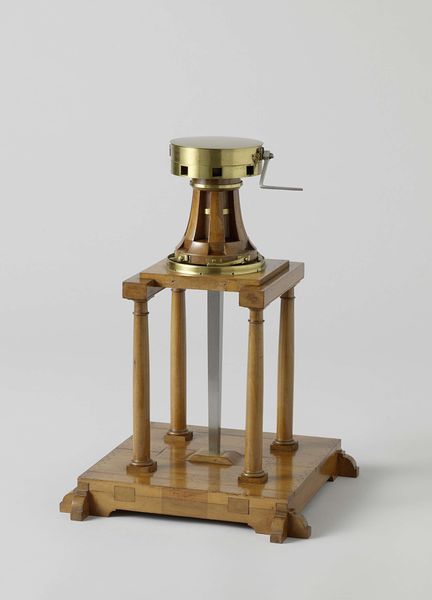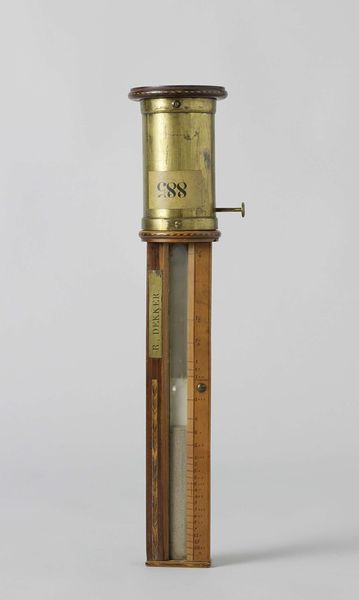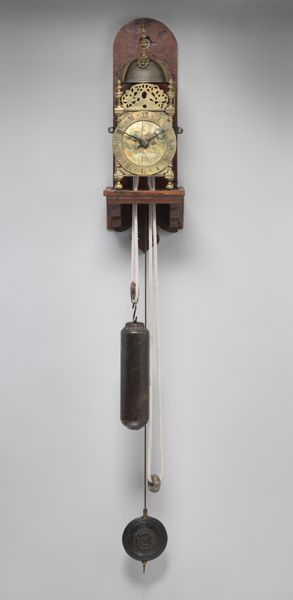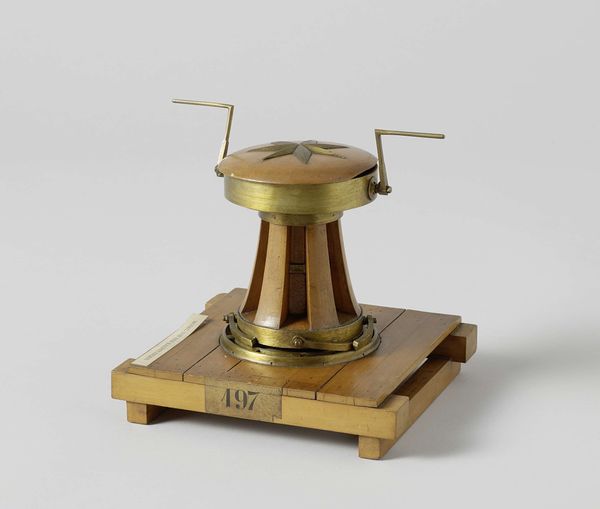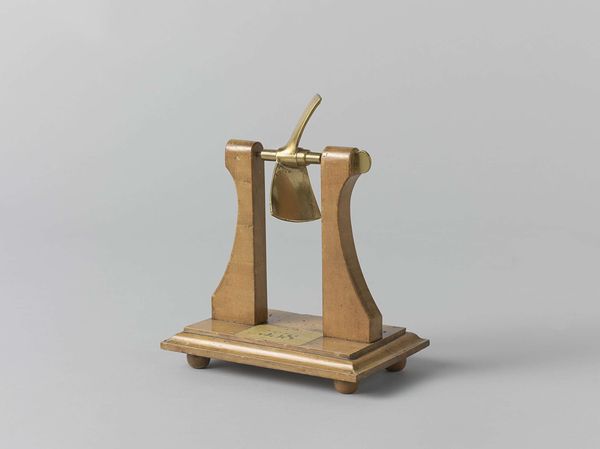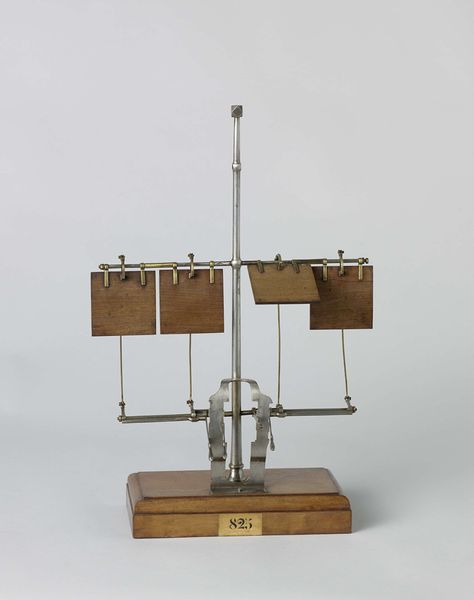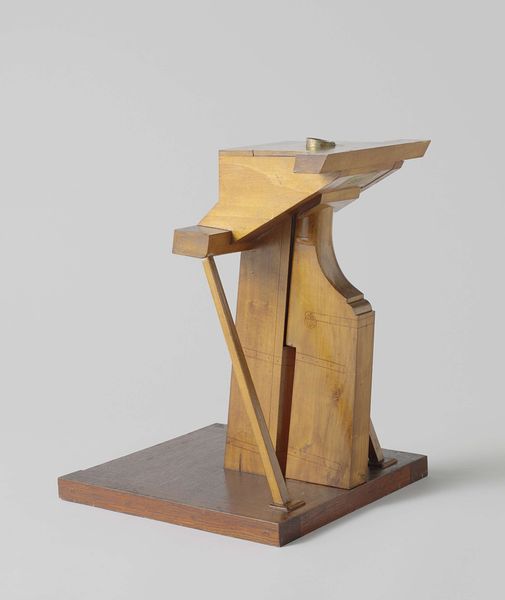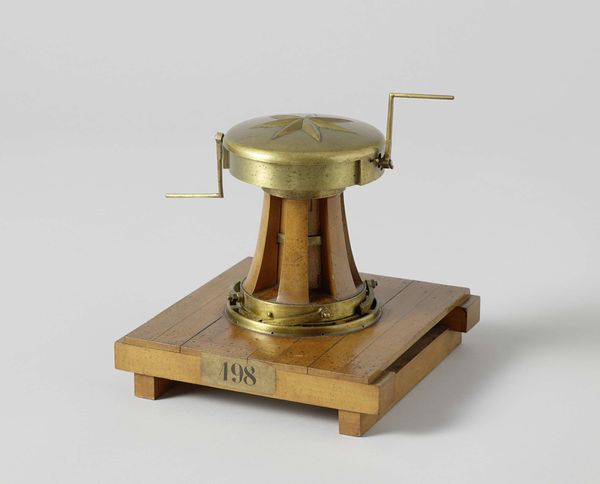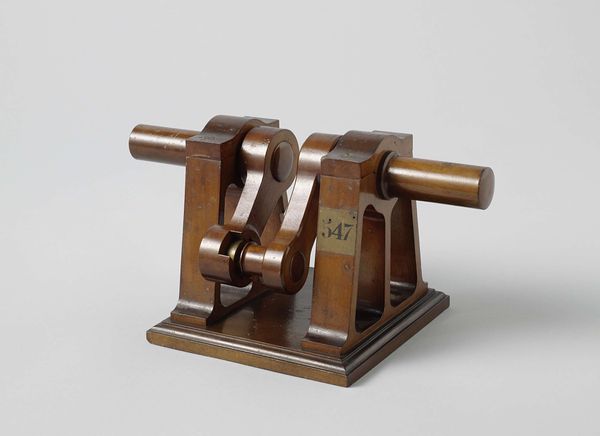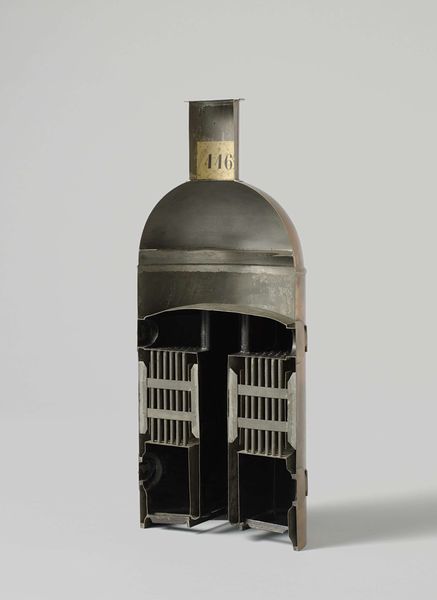
#
3d sculpting
#
3d model
#
3d printed part
#
sculpture
#
unrealistic statue
#
3d shape
#
prop product design
#
metallic object render
#
product photography
#
cut-out
Dimensions: height 38.7 cm, width 24.7 cm, depth 17.3 cm
Copyright: Rijks Museum: Open Domain
Curator: This object is identified as a “Model of a Tubular Boiler,” created by an anonymous artist between 1845 and 1855. It seems to be crafted primarily from metal, and stands as a testament to early industrial design. What are your initial thoughts? Editor: Stark and unsettling. It looks like a bizarrely proportioned monument. It gives me the shivers to see the very building blocks of industry stripped down into this diminutive object. Curator: Indeed, there is a certain austerity in its geometric simplicity, wouldn't you say? The interplay between the cylindrical form above and the more elaborate base creates an interesting visual tension. Editor: Absolutely. What is crucial here is thinking through the wider social picture: the transition into modernity for those making such equipment, alongside their place within an ever more mechanized and regulated landscape. Curator: And let's also consider how its form reflects the engineering ideals of the period—a focus on functionality and efficiency, expressed through clean lines and unadorned surfaces. This directs my attention straight towards its purpose and functional elements. Editor: I'm struck by the engraving and details at its base, hints of embellishment even amidst the austerity you observe. What impact does this emerging industrial technology have on lived experience, and access to a rising technological horizon of increased global transit, if one does not happen to possess sufficient wealth? Curator: An excellent question. We should contemplate the societal implications within such a transformative period in production, but, equally, acknowledge the way its stark geometry provides a glimpse into the rationalist aesthetics driving industrial innovation. The overall composition conveys a sense of stability and order. Editor: I agree to a point. In addition to those formal qualities, however, one should really reflect on its significance within the bigger framework of class struggle. We cannot forget the huge amount of suffering associated with factories that utilize such devices. What possibilities were made, or unmade, by designs like these? Curator: A powerful reminder to broaden our interpretive lens. Thank you. I will certainly meditate more on that as I observe other works of art. Editor: My pleasure, together, we may be one step closer to viewing and shaping the bigger picture of historical artworks.
Comments
No comments
Be the first to comment and join the conversation on the ultimate creative platform.

